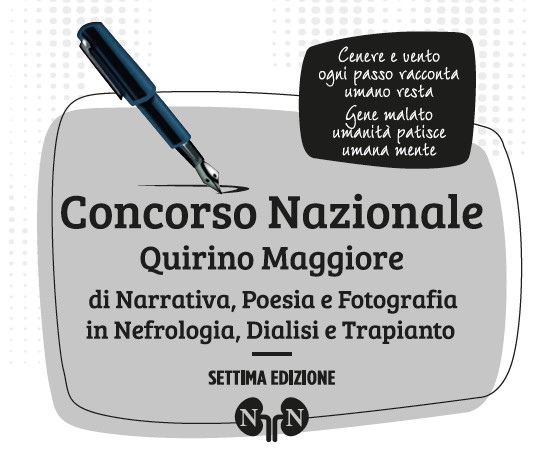Most read articles by the same author(s)
- Franco Bergesio, Marco Di Girolamo, Giuseppe Curciarello, Anna Lucia Caldini, Santi Nigrelli, Anna Maria Ciciani, Marco Lombardi, Enrico Eugenio Minetti, Paola Parronchi, Calogero Cirami, Giacomo Laffi, Riccardo Ciuti, Chiara Cresci, Roberto Salerno, Give the planet a chance if we want our patients to have a future , Giornale di Clinica Nefrologica e Dialisi: Vol. 32 No. 1 (2020): January-December 2020
- Marco Lombardi, Franco Bergesio, GCND for the planet. A strong call to action for all: doctors, nurses and patients , Giornale di Clinica Nefrologica e Dialisi: Vol. 33 No. 1 (2021): January-December 2021
- Leonardo Caroti, Lino Calogero Cirami, Egrina Dervishi, Enrico Eugenio Minetti, The Role of the Nephrologist in the Diagnosis and Follow-up of Patients with Fabry's Disease: The Importance of a Multidisciplinary Approach , Giornale di Clinica Nefrologica e Dialisi: Vol. 29 No. 3 (2017): July-September 2017
- Federico Perfetto, Francesco Cappelli, Silvia Farsetti, Elio Dimarcantonio, Silvia Casagrande, Massimo Di Gioia, Marco Di Girolamo, Franco Bergesio, TTR amyloidosis: the other side of the coin , Giornale di Clinica Nefrologica e Dialisi: Vol. 31 No. 1 (2019): January-March 2019
- Franco Bergesio, Anna Maria Ciciani, Marco Lombardi, Gabriele Cerini, Alessandra Petrioli, Giuseppe Curciarello, Monica Pierattelli, Neri Pucci, Alfredo Zuppiroli, Leonardo Mari, Pietro Claudio Dattolo, Let's not waste precious time , Giornale di Clinica Nefrologica e Dialisi: Vol. 35 No. 1 (2023): January-December 2023
- Giuseppe Curciarello, Santi Nigrelli, Sabrina Moretti, Sandra Audino, Franco Bergesio, Light-chain amyloidosis (AL) “once upon a time there was an incurable disease”: progresses from almost no cure to a personalized therapy. , Giornale di Clinica Nefrologica e Dialisi: Vol. 30 No. 3-4 (2018): July-December 2018
- Franco Bergesio, Amyloidosis: History, Pathophysiology and Classification of a not Quite so Rare Disease , Giornale di Clinica Nefrologica e Dialisi: Vol. 29 No. 2 (2017): April-June 2017
- Stefano Aterini, Anna Maria Ciciani, Franco Bergesio, Lorenzo Aterini, Barbara Vadalà, Marco Gallo, Intradialytic hypotension frequency is reduced by levocarnitine supplementation , Giornale di Clinica Nefrologica e Dialisi: Vol. 34 No. 1 (2022): January-December 2022
- Marco Lombardi, Franco Bergesio, Green nephrology: for a sustainable nephrology , Giornale di Clinica Nefrologica e Dialisi: Vol. 36 No. 1 (2024): January-December 2024
- Marco Gallo, Stefano Aterini, Sandro Bandini, Franco Bergesio, Anna Maria Ciciani, Lorenzo Aterini, Francesca Calderini, Fiamma Balboni, Severe hypocalcaemia following oral citrate intake in a patient on chronic hemodialysis , Giornale di Clinica Nefrologica e Dialisi: Vol. 33 No. 1 (2021): January-December 2021











